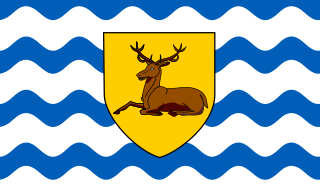
Hertfordshire is one of the home counties in southern England. It borders Bedfordshire and Cambridgeshire to the north, Essex to the east, Greater London to the south, and Buckinghamshire to the west. For government statistical purposes, it forms part of the East of England region.
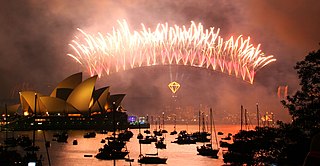
Fireworks are a class of low explosive pyrotechnic devices used for aesthetic and entertainment purposes. They are most commonly used in fireworks displays, combining a large number of devices in an outdoor setting. Such displays are the focal point of many cultural and religious celebrations.
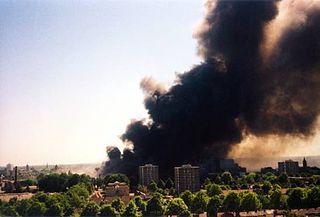
The Enschede fireworks disaster was a catastrophic fireworks explosion on 13 May 2000 in Enschede, Netherlands. The explosion killed 23 people including four firefighters and injured nearly 1,000 others. A total of 400 homes were destroyed and 1,500 buildings were subsequently damaged.

Hemel Hempstead is a town in the Dacorum district in Hertfordshire, England. It is 24 miles (39 km) northwest of London, and is part of the Greater London Urban Area. The population at the 2011 census was 97,500.

Kings Langley is a village, former manor and civil parish in Hertfordshire, England, 21 miles north-west of Westminster in the historic centre of London and to the south of the Chiltern Hills. It now forms part of the London commuter belt. The village is divided between two local government districts by the River Gade with the larger western portion in the Borough of Dacorum and smaller part, to the east of the river, in Three Rivers District. It was the location of Kings Langley Palace and the associated King's Langley Priory, of which few traces survive.

The Music for the Royal Fireworks is a suite in D major for wind instruments composed by George Frideric Handel in 1749 under contract of George II of Great Britain for the fireworks in London's Green Park on 27 April 1749. The music celebrates the end of the War of the Austrian Succession and the signing of the Treaty of Aix-la-Chapelle (Aachen) in 1748. The work was very popular when first performed and following Handel's death.
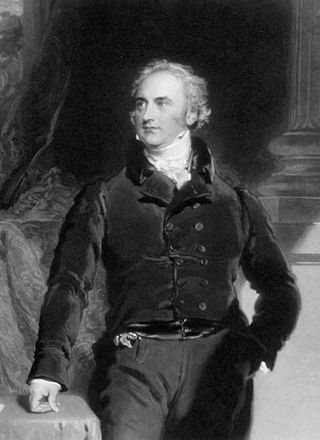
Sir Astley Paston Cooper, 1st Baronet was a British surgeon and anatomist, who made contributions to otology, vascular surgery, the anatomy and pathology of the mammary glands and testicles, and the pathology and surgery of hernia.
There have been many extremely large explosions, accidental and intentional, caused by modern high explosives, boiling liquid expanding vapour explosions (BLEVEs), older explosives such as gunpowder, volatile petroleum-based fuels such as gasoline, and other chemical reactions. This list contains the largest known examples, sorted by date. An unambiguous ranking in order of severity is not possible; a 1994 study by historian Jay White of 130 large explosions suggested that they need to be ranked by an overall effect of power, quantity, radius, loss of life and property destruction, but concluded that such rankings are difficult to assess.

The Buncefield fire was a major fire at an oil storage facility that started at 06:01 UTC on Sunday 11 December 2005 at the Hertfordshire Oil Storage Terminal, located near the M1 motorway, Hemel Hempstead, in Hertfordshire, England. The terminal was the fifth largest oil-products storage depot in the United Kingdom, with a capacity of about 60 million Imperial gallons of fuel. The terminal is owned by Total UK Limited (60%) and Texaco (40%).

A rocket is a pyrotechnic firework made out of a paper tube packed with gunpowder that is propelled into the air. Types of rockets include the skyrockets, which have a stick to provide stability during airborne flight; missiles, which instead rotate for stability or are shot out of a tube; and bottle rockets, smaller fireworks – 1½ in (3.8 cm) long, though the attached stick extends the total length to approximately 12 in (30 cm) – that usually contain whistle effects.
Woodhall Farm is a neighbourhood on the northern side of Hemel Hempstead in the county of Hertfordshire. It was built on the former Brocks Fireworks site. Its location on the edge of Hemel Hempstead means it has open fields to its north and east with the landscaped High Wood forming an integral green barrier and recreational space.
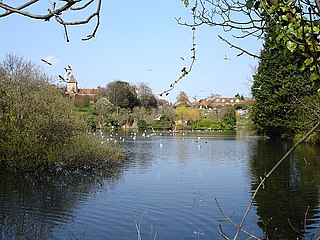
Faversham, in Kent, England, has claims to be the cradle of the UK's explosives industry: it was also to become one of its main centres. The first gunpowder plant in the UK was established in the 16th century, possibly at the instigation of the abbey at Faversham. With their estates and endowments, monasteries were keen to invest in promising technology.

M-80s are an American class of large powerful firecrackers, sometimes called salutes. M-80s were originally made in the mid 20th century for the U.S. military to simulate explosives or artillery fire; later, M-80s were manufactured as fireworks. Traditionally, M-80s were made from a small cardboard tube, often red, approximately 1+1⁄2 inches (3.8 cm) long and 9⁄16 inch (1.4 cm) inside diameter, with a fuse coming out of the side; this type of fuse is commonly known as cannon fuse or Visco fuse, after a company responsible for standardizing the product. The tubes usually hold approximately 3 grams of pyrotechnic flash powder. The "M" is designated by a U.S. military convention for "standard" equipment and "80" is for the 80 grains of flash powder within it.
The 1979–80 Rotary Watches National Basketball League season was the eighth season of the National Basketball League.

On 10 April 2016 at approximately 03:30 AM IST, the Puttingal Temple in Paravur, Kollam, Kerala, India, experienced an explosion and fire after firework celebrations went awry. As a result, 111 people were killed and more than 350 were injured, including some with severe burns. The temple and at least 150 houses in the area of the temple were damaged by the blast. According to local reports and eyewitnesses, the explosion and fire were caused by sparks from a firecracker being used in a competitive fireworks display igniting fireworks in a concrete storehouse. The temple did not have permission from Kerala government authorities to conduct a "competitive fireworks display". About 15,000 pilgrims were visiting the temple to mark local Hindu celebrations during the last day of a seven-day festival of the goddess Bhadrakali.
Richard Plunkett (1788–1832) was a Parish Officer of the Law, variously described as a headborough, beadle or night-constable, in Whitechapel, in the East End of London, between 1817 and 1826. His duties were centred upon the Whitechapel watch-house, from which he and his watchmen had to deal with nocturnal criminality in an area of rapidly increasing population, crowded conditions with poor sanitation, and much urban poverty and squalor. Plunkett's term of office just preceded the Metropolitan Police Act 1829, by which a new system of policing was introduced. Plunkett was often called upon to give evidence at the Old Bailey, the cases being scheduled for hearings two or three times a year. His testimony and that of his officers in these more serious cases show his relations with the population at large, his investigations, pursuits and arrests, often based on personal knowledge of the offenders. The majority of these cases resulted in convictions leading to penal transportation. His work illustrates the real activities of the parish police of Whitechapel just over a decade before the writing of Oliver Twist.
The Tangerang fireworks disaster was the accidental ignition of stored fireworks in Tangerang, Indonesia. On 26 October 2017 at the PT. Panca Buana Cahaya Sukses, a fireworks manufacturing factory in Kosambi, Tangerang. The explosion occurred in a warehouse connected to the factory and ignited a large fire. 103 people were working at the factory at the time of the explosion. At least 49 people were killed and 46 others were injured in the incident. Authorities confirmed that several people were still missing. It was the deadliest industrial accident in Indonesia.
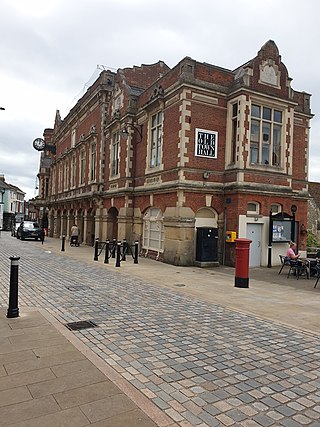
The Old Town Hall is a municipal building in the High Street, Hemel Hempstead, Hertfordshire, England. The town hall, which was the meeting place of Hemel Hempstead Borough Council, is a Grade II listed building.













